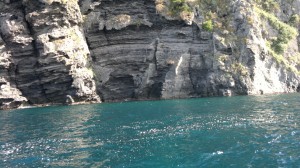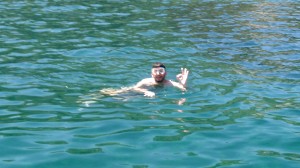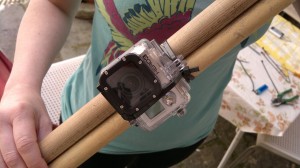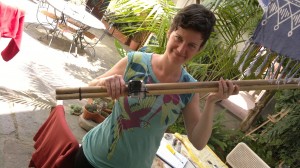We moved to the Northern area today. The southern site was hit by a strong southern wind and it was very difficult to work with the tripod falling continuously. The northern area was more accessible. Here too there is an acidified area and a less acidified one next to it. The scenario is always astonishing.
We used the same methodology: we anchored, waited until the current stabilised the rib and placde the tripod few meter away from the rib. The video recordings though were quite disappointing in this location. The area appeared less inhabited. It was only at the end of the day that something changed: the temperature has raised quite a lot and Nico could not stay on board anymore. So, he jumped in the water with the mask on and soon after few meters he raised his head yelling:”it’s full of fish here!!!”. And there they were, all hanging out around my tripod, away from our sight.
We realised soon that our methodology needed to be slightly modified. We wanted to use the fixed camera to video the feeding activity of Sarpa salpa, but they are highly motile and it is quite difficult to capture them. We decided, therefore, to point the bullet camera on the tripod in an area where there was high passage of fish, and to follow the feeding activity of this species by using the gopro camera. We went back to the diving center, we rented 2 wetsuits and all the equipment to snorkel, ready to dive and video the animals moving. This has been the key finding of the entire study. We understood that the methodology used so far works well in cold places where we are used to work, but here the sea temperature allows us to dive and therefore, to follow the animals. It was a relief. Now we are ready to start the playbacks.
We mounted the gopro camera on a “highly tech” support kindly offered by the landlady, Lina, and we tested its deployment on the next Saturday…it worked!!!




